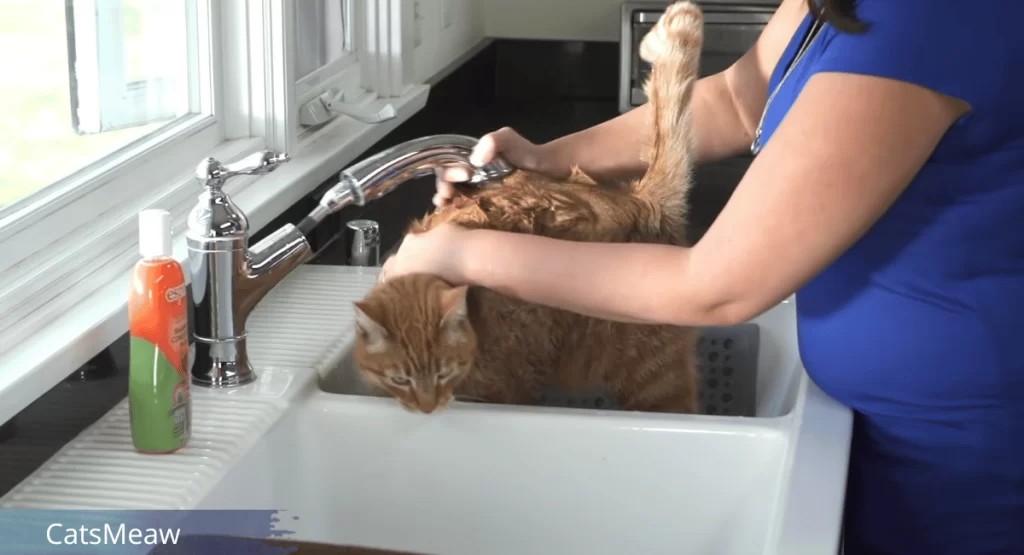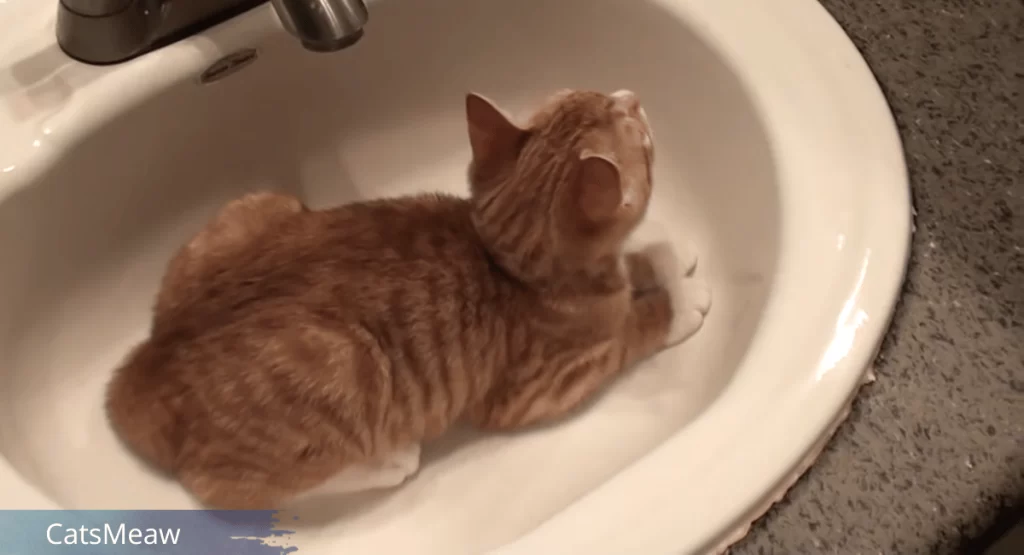I have a cat and I understand the challenges that come with bathing a cat. Many people believe that cats are self-grooming creatures and do not require baths. However, there are certain situations where giving your cat a bath is necessary. In this article, I will share some valuable tips on how to bathe a cat and make the grooming process less stressful for both you and your feline friend.

Table of Contents
Why do you must bathe a cat?
Cats are known for their meticulous grooming habits, spending hours each day licking themselves clean. However, there are instances when a bath becomes necessary. Cats with certain medical conditions, such as skin allergies or flea infestations, may require regular baths to alleviate discomfort and promote healing. Additionally, cats who spend time outdoors may bring in dirt, debris, or unpleasant odors that can be difficult to remove without a proper bath.
Understanding your cat’s grooming habits
Before deciding to bathe a cat, it is crucial to understand your cat’s grooming habits. Cats are naturally clean animals and take pride in keeping themselves neat and tidy. They have tiny barbs on their tongues, which act as a comb, helping them remove dirt and loose hair from their fur. Observing your cat’s grooming routine will give you insights into their preferences and help you prepare for the bath accordingly.
Our pick: The Best Cat Grooming Supplies
Preparing for the bath
Now that you understand why cats may need baths and have observed your cat’s grooming habits, it’s time to prepare for the bath. Here are a few essential steps to follow:
- Gather the necessary supplies: Before starting the bathing process, ensure you have all the required supplies within reach. These may include cat-friendly shampoo, towels, a non-slip mat, and a gentle brush or comb.
- Choose the right bathing location: Select a warm, quiet, and confined space for the bath. A bathroom or utility sink can work well. Make sure the area is free from any hazards that could frighten or harm your cat.
- Trim your cat’s nails: Trimming your cat’s nails before the bath will help prevent accidental scratches. Use a cat-specific nail trimmer and be cautious not to cut too close to the quick.
Choosing the right bathing products for your cat
Selecting the right bathing products is crucial to ensure a safe and effective bath for your cat. Here are some tips to help you make the right choices:
- Use cat-specific shampoo: Cats have delicate skin that is easily irritated by human shampoo or other harsh products. Look for a gentle, hypoallergenic shampoo formulated specifically for cats.
- Consider medicated shampoos when necessary: If your cat has a skin condition or flea infestation, consult with your veterinarian about using a medicated shampoo that is suitable for their specific needs.
- Avoid strong fragrances: Cats have a keen sense of smell, and strong fragrances can be overwhelming for them. Opt for unscented or lightly scented shampoos to avoid causing discomfort or stress.
Related: Best Guide to Trimming Your Cat’s Nails

Step-by-step guide to bathing your cat
Bathing a cat requires patience, gentle handling, and a step-by-step approach. Here is a guide to help you through the process:
- Preparation: Place a non-slip mat in the sink or tub to provide stability for your cat. Fill the bathing area with a few inches of warm water. Have the towels, shampoo, and any other necessary items within reach.
- Introduce your cat to the water: Gently place your cat in the water, allowing them to get accustomed to the sensation. Use a small cup or pitcher to wet their fur, starting from the neck and working your way down.
- Apply the shampoo: Dilute the cat shampoo according to the instructions on the bottle. Gently massage the shampoo into your cat’s fur, avoiding the face and ears. Be mindful of any sensitive areas or skin irritations.
- Rinse thoroughly: Use the same cup or pitcher to rinse off the shampoo, ensuring there is no residue left on your cat’s fur. Take extra care to rinse all areas, including the underbelly and paws.
- Dry your cat: Wrap your cat in a clean, dry towel and gently pat them dry. If your cat tolerates it, you can use a hairdryer on the lowest setting, keeping it at a safe distance to prevent overheating or scaring your cat.
Drying and brushing your cat after the bath
After the bath, it is important to dry and brush your cat to ensure their comfort and to prevent matting of their fur. Here are some tips to help you through this process:
- Remove excess water: Use a clean towel to gently squeeze out any excess water from your cat’s fur. Avoid rubbing vigorously, as this may cause tangles or discomfort.
- Brush your cat’s fur: Once your cat is mostly dry, use a soft brush or comb to gently remove any remaining tangles or loose hair. This step can be a pleasant experience for your cat if done gently and with care.
- Reward your cat: After the bath, reward your cat with treats, praise, or playtime session. This positive reinforcement will help create a positive association with bath time and make future baths easier.
Tips for making bath time less stressful for your cat
Bathing a cat can be a stressful experience for both the cat and the owner. Here are some tips to help make bath time less daunting:
- Start early: Introduce your cat to baths at a young age, as they are more likely to adapt to the process. Make it a positive experience by rewarding them and providing plenty of praise.
- Use calming techniques: Play soothing music or use pheromone sprays designed to reduce stress in cats. These techniques can help create a calming environment during bath time.
- Take breaks if needed: If your cat becomes too stressed or anxious during the bath, take a break and try again later. Forcing the process can lead to further stress and make future baths even more challenging.
Dealing with common bathing challenges
to bathe a cat can present various challenges. Here are some common issues you may encounter and tips to overcome them:
- Scratching or biting: To prevent scratches or bites, consider using a grooming restraint or wrapping your cat in a towel, leaving only the necessary body parts exposed.
- Resistance to water: Some cats may have an aversion to water. Gradually introduce them to water by starting with a damp cloth and slowly progressing to shallow baths.
- Fear of the bathing area: If your cat is afraid of the bathing area, start by placing their food near the area and gradually move it closer over time. This will help associate the space with positive experiences.
Alternatives to bathing for cats who dislike water
If your cat absolutely despises water and bathing is not an option, there are alternatives to keep them clean:
- Dry shampoo: Use a cat-specific dry shampoo that can be applied to your cat’s fur and brushed out. This method removes dirt and odors without the need for water.
- Cat wipes: Wet cat wipes are a convenient way to clean your cat without a full bath. These wipes are designed to be gentle on the skin and effectively remove dirt and debris.
- Professional grooming: If you are unable to bathe a cat or they require specialized grooming, consider seeking the help of a professional groomer who is experienced in handling cats.
Related: Best Guide for Managing Hair Loss in Cats
Conclusion
To bathe a cat may seem like a daunting task, but with the right approach and understanding of your cat’s needs, it can become a manageable and even enjoyable experience. Remember to be patient, gentle, and always prioritize your cat’s comfort and well-being. By following the tips provided in this article, you can ensure that bath time becomes a stress-free and beneficial part of your cat’s grooming routine.
